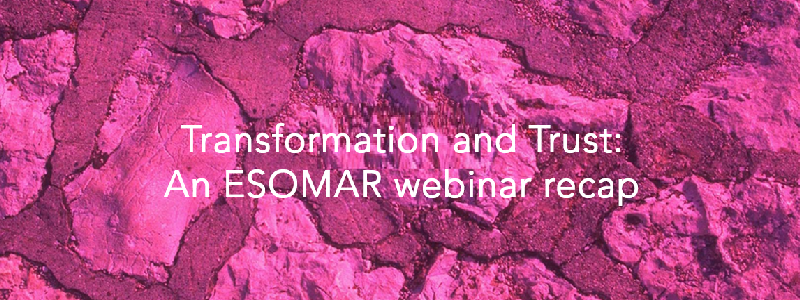By E2E Research | August 2, 2022
So you’re coming to Toronto! I hope you’re planning to come for a few extra days because there’s lots to do while you’re here! And there’s something for little kids, teens, parents, and grandparents. Come one, come all!
The time to travel from the Sheraton to the attraction is listed with each event. Toronto is a huge city with lots of traffic so we’re used to “close” attractions being an hour away. Take advantage of the TTC, our transit system, if you can.
If you have any questions about any Toronto attractions, please email me or message me on Linkedin. I’d be happy to help make sure you have a great time in my home town!
First, I will be personally leading four tours!
Coming to Esomar congress alone? Want to hang out with other Esomar delegates? Would rather not get lost? Then these tours are perfect for you! If you’re interested in attending any of these four tours, please enter your name and email address in the following google docs form. If you have any trouble with it, let me know and I’ll add your name for you. I’ll connect with all the attendees close to the date to confirm details.
 Walking Tour of Bakeries and Local Sights: This tour will run Saturday, September 17 leaving the conference center at 10:30am. We’ll walk about 6 km visiting at least 9 bakeries (including 3 of my favourites) and seeing lots of interesting sights. As long as we’re walking, any baked goods you buy have zero calories. It will take 3 to 4 hours depending on how much bakery buying you do and how fast folks walk. I’m even happy to spend the rest of the day showing folks around. If it’s poor weather, instead I will help people get to a museum of their choice. Sign up here.
Walking Tour of Bakeries and Local Sights: This tour will run Saturday, September 17 leaving the conference center at 10:30am. We’ll walk about 6 km visiting at least 9 bakeries (including 3 of my favourites) and seeing lots of interesting sights. As long as we’re walking, any baked goods you buy have zero calories. It will take 3 to 4 hours depending on how much bakery buying you do and how fast folks walk. I’m even happy to spend the rest of the day showing folks around. If it’s poor weather, instead I will help people get to a museum of their choice. Sign up here.
What’s on the agenda?
- Chinese, Japanese, Jewish, Danish, French, & Vegan bakeries
- Chinatown
- Old and new city hall
- Provincial parliament buildings
- University of Toronto
- Art Gallery of Ontario
- Eaton Centre
- Shopping and local neighborhood streets
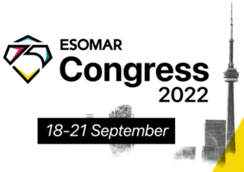
Paint Night: Show off your amazing or dismal painting talents! We’ll go to a studio where they will show us how to paint something. Canvas, brushes, paint, aprons are all provided, and you’ll go home with a finished canvas that easily fits in your suitcase. You’re welcome to bring food and drinks. This will run Saturday or Sunday evening from around 5pm to 9pm. More specific details will follow. PLEASE PRE-REGISTER for this. If not enough people sign up, this event will not run. ~$50.

Visit to Filming Location Casa Loma: Sunday, September 18 from 12 noon to about 5pm. If you’ve seen X-Men, Chicago, The Tuxedo, Scott Pilgrim vs. the World, Crimson Peak, Twitches, or Titans, you’ve already seen Casa Loma! It’s a beautiful “castle” with secret passageways and an underground tunnel. It was built with extravagant conveniences that people had never experienced before – an elevator, telephones, indoor pool! Head up the creeky wooden stairs into the turret for a great view of the city! I’ll lead you there on our subway system and you’ll probably want around 3 hours at the venue. $40 entry. Sign up here.
Visit to Ripley’s Aquarium of Canada: Oh, beautiful big and large fishies! Come say hi to all of them at our aquarium. We’ll leave at 2:30pm, just after the Annual General Meeting on Wednesday. Tickets are are $44. We will walk there together. If you wish, you can visit the CN Tower (Please don’t say Canadian National Tower) next door when you’re done. Sign up here.
If you’re interested in attending any of these tours, please enter your name and email address in the following google docs form. I”ll connect with all the attendees close to the date to confirm details.
.
.
Play
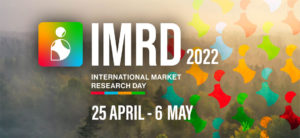
Toronto Islands / Centre Island
Enjoy playgrounds, gardens, lovely beaches for swimming, walking trails, small zoo, children’s amusement park, and an amazing view of the Toronto skyline. There are food options but you might still want to bring a packed lunch and snacks. Don’t worry if you forgot your swim suit – there’s a separate nude beach!
If you want one recommendation for how to play all day, this would be it.
Access to the island is free but you must buy a ferry ticket to get there.
20 minute walk or 15 minute transit to get to the ferry.
Family. Outdoors. Full day.

CN Tower
Take a couple of hours and head half a kilometer up the elevator. Walk on the glass floor, eat at the revolving restaurant, and peer out for 160 kilometers on a clear, sunny day! Thrill seekers might like walking outside on the roof!
20 minute walk.
Family. Indoors. Half day.
Rogers Centre baseball games
At the base of the CN Tower, enjoy a Blue Jays baseball game at the Skydome, the white dome in the picture (only outsiders call it the Rogers Centre)! We’ll be playing against Tampa Bay Rays, Baltimore Orioles, and New York Yankees from Sept 14 to Sept 28.
Tickets required.
20 minute walk.
Family. Indoors/outdoors. Full day.
Ripleys Aquarium
Admire sea creatures from around the world at the base of the CN Tower next door. Great for a rainy day!
Tickets required.
20 minute walk.
Family. Indoors. Half day.
Toronto Zoo
Spend the entire day visiting animals from around the world in an vast woodland park. Bring a lunch or eat there.
Tickets required.
45 minute drive or 100 minute public transit.
Family. Outdoors. Full day.
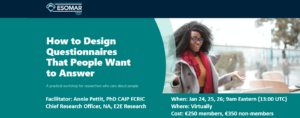
Canada’s Wonderland
Adults and teens will enjoy a full day of death defying rides, rollercoasters, and shows.
Tickets required.
45 minute drive or 90 minute public transit.
Family. Outdoors. Full day.
.
.
Museums
 Royal Ontario Museum
Royal Ontario Museum
We only refer to this museum by saying the acronym as a single syllable word – ROM. If your kids love dinosaurs and mummies, this is the place to go! The building is loved or hated depending on whether you like the combination of historic and modern architecture.
This is my top museum recommendation.
Tickets required.
25 minute walk or 10 minute subway ride.
Family. Indoors. Full day.
.
.
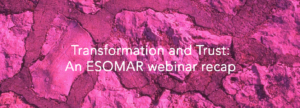
Art Gallery of Ontario
We only refer to this gallery by saying the three letters of the acronym – A – G – O. No one will know what you mean if you say the acronym like this word: “We went shopping two days ago.” Paintings, illustrations, sculptures, modern art, Canadian art. Enjoy!
Tickets required.
15 minute walk or subway ride
Adults. Indoors. Full day.
.
.
Bata Shoe Museum
Yes, for real. This is a world class museum that specializes in historic and modern shoes from around the world.
Tickets required. Free every Sunday!
35 minute walk or 15 minute subway ride.
Adults. Indoors. Half day.
.
.
Hockey Hall of Fame
If you’re a fan of hockey at all, this attraction is a required pilgrimage. All hockey, all the time!
Tickets required.
15 minute walk.
Family. Indoors. Half day.
Fort York
Visit the remains of a historical fort! Check the website to see if there are any special activities planned.
Free!
35 minute walk or 30 minute subway ride.
Family. Outdoors. Half day.
Black Creek Pioneer Village
See how pilgrams lived in Canada in the 1800s.
Tickets required.
40 minute drive or 1 hour transit ride.
Family. Outdoors. Full day.
.
.
Shop
Distillery District
This historic pedestrian area of Toronto is regularly used in TV shows and movies is full of little shops, restaurants, and art galleries. There’s often live entertainment in the streets.
Out of all the shopping, this is what I’d recommend.
35 minute walk or 25 minute transit ride.
Adults. Outdoors. Full day.
Kensington market
A beloved area with a mix of unusual shopping, food markets, and restaurants. It’s right next to Chinatown so stop there before or afterwards to enjoy fantastic, authentic restaurants and shopping.
25 minute walk or transit ride.
Adults. Indoors.Outdoors. Half day.
.
.
St. Lawrence market
A meat and vegetable market upstairs and outside with flea market style shopping downstairs. Enjoy quaint shopping in the neighboring streets, or head over to the Distillery District for the evening.
20 minute walk or 15 minute transit ride.
Adults. Indoors. Half day.
.
.
Eaton Center
Shoppers will easily spend an entire day here! You’ll find all the major brands plus plenty to eat and drinks.
5 minute walk.
Shoppers. Indoors. Full day.
.
.
Queen Street West
From Yonge Street until you get tired of walking, this street is full of quaint shops and eateries. Enjoy the stroll!
Easy walk from the congress hotel.
Shoppers. Outdoors. Full day.
.
.
Nature
High Park
Bring a lunch and spend a whole day meandering through nature trails and gardens, and enjoying ducks and wildlife. You’re not supposed to feed the ducks but you could bring unshelled peanuts to entice the chipmunks. Kids will enjoy a fantastic playground and a tiny zoo.
Free.
45 minute transit ride.
Family. Outdoors. Full day.
.
.
Tommy Thompson park
Walk or bike this peaceful park constructed from landfill. It’s now a protected breeding zone for birds with lots of wildflowers and ponds full of ducks. Bring food and water as there are no services. There are a couple of porta potties so use them if you see them. When you get to the end and if it’s a hot day, take a swim in your clothes. That’s how it’s done! Serious walkers and nature lovers only. You’ve been warned.
This is my top park recommendation.
Free.
75 minute walk or 45 minute transit ride.
Adults. Outdoors. Half/full day.
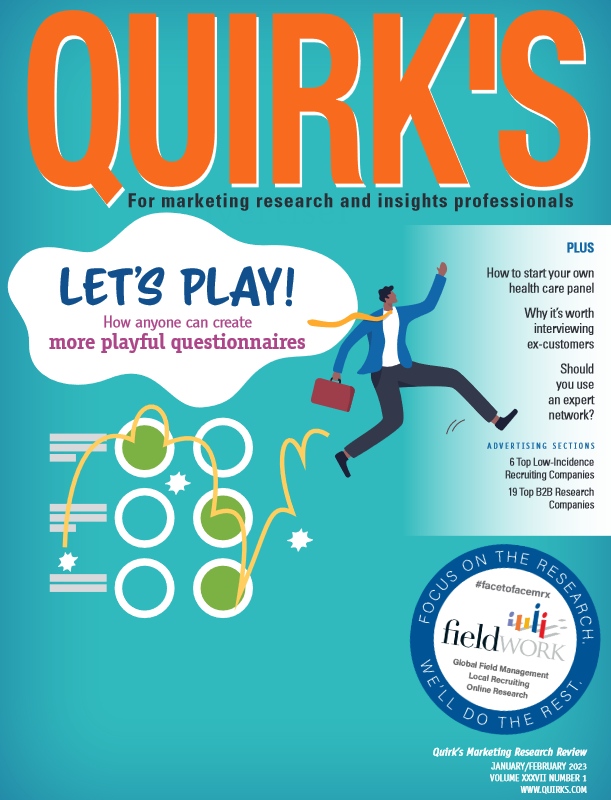
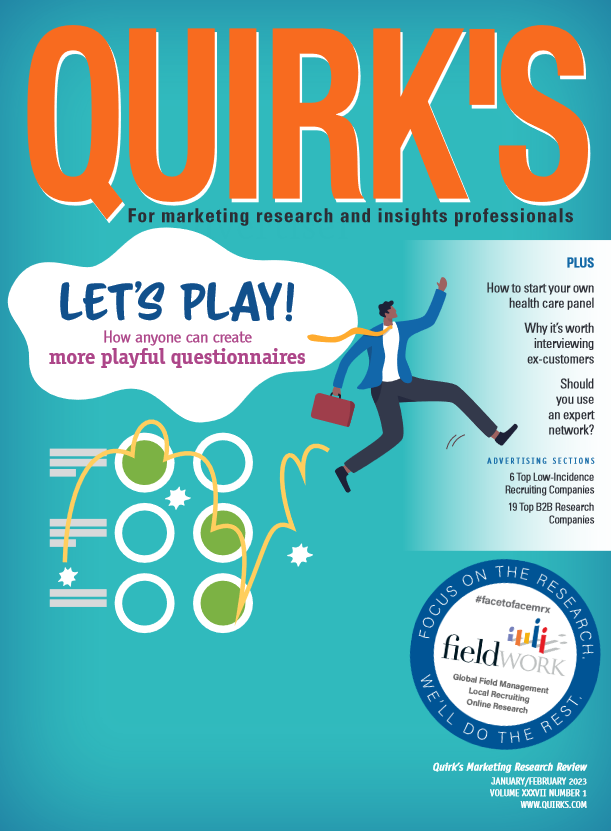 Market and consumer research surveys have a reputation of being boring. Obviously, that’s not a tradition any of us want to maintain because of the negative impact it has on completion rates, data quality, and costs.
Market and consumer research surveys have a reputation of being boring. Obviously, that’s not a tradition any of us want to maintain because of the negative impact it has on completion rates, data quality, and costs.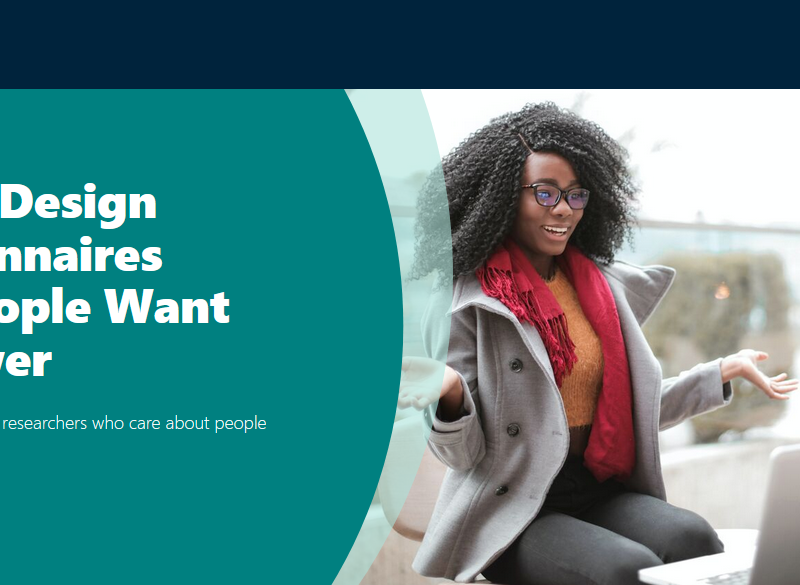

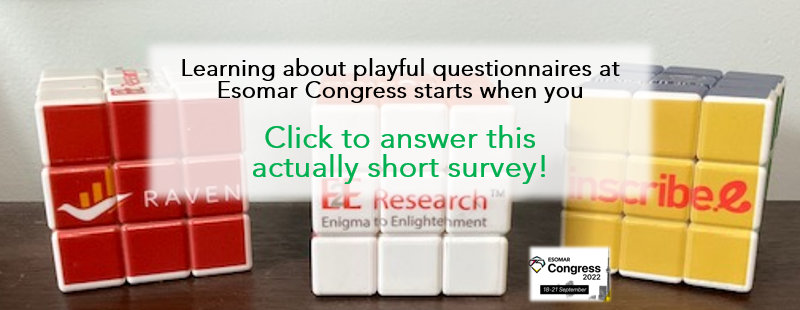
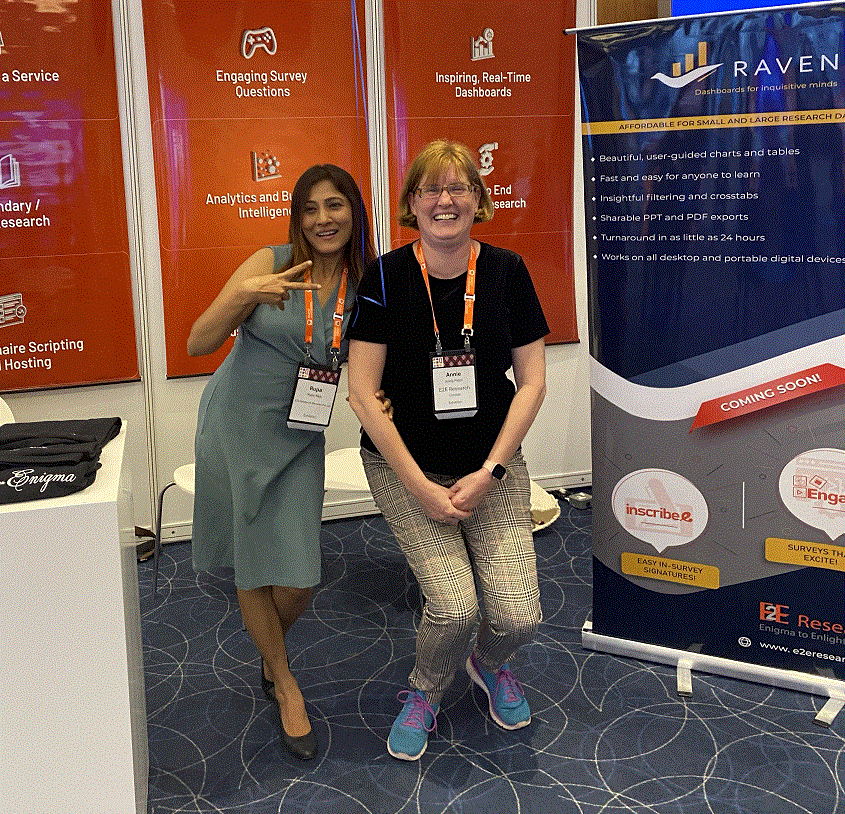 On Tuesday, September 20th, Rupa Raje and Annie Pettit ran a session at Esomar congress on designing more playful questionnaires. In preparation for that presentation, researchers were invited to complete a very short questionnaire incorporating a range of innovative question designs.
On Tuesday, September 20th, Rupa Raje and Annie Pettit ran a session at Esomar congress on designing more playful questionnaires. In preparation for that presentation, researchers were invited to complete a very short questionnaire incorporating a range of innovative question designs.
 Walking Tour of Bakeries and Local Sights: This tour will run Saturday, September 17 leaving the conference center at 10:30am. We’ll walk about 6 km visiting at least 9 bakeries (including 3 of my favourites) and seeing lots of interesting sights. As long as we’re walking, any baked goods you buy have zero calories. It will take 3 to 4 hours depending on how much bakery buying you do and how fast folks walk. I’m even happy to spend the rest of the day showing folks around. If it’s poor weather, instead I will help people get to a museum of their choice.
Walking Tour of Bakeries and Local Sights: This tour will run Saturday, September 17 leaving the conference center at 10:30am. We’ll walk about 6 km visiting at least 9 bakeries (including 3 of my favourites) and seeing lots of interesting sights. As long as we’re walking, any baked goods you buy have zero calories. It will take 3 to 4 hours depending on how much bakery buying you do and how fast folks walk. I’m even happy to spend the rest of the day showing folks around. If it’s poor weather, instead I will help people get to a museum of their choice. 


 Royal Ontario Museum
Royal Ontario Museum

 The first thing I think of when I hear the name “President’s Choice” is chocolate chip cookies. Thirty-five years ago, when this store brand first appeared on Canadian Loblaw’s shelves, it packed more chocolate chips into their cookies than any other brand. Even more than the name brand cookies. (Even more than my mom’s home baked cookies.) It was the only “brand” of cookie that any Canadian kid wanted.
The first thing I think of when I hear the name “President’s Choice” is chocolate chip cookies. Thirty-five years ago, when this store brand first appeared on Canadian Loblaw’s shelves, it packed more chocolate chips into their cookies than any other brand. Even more than the name brand cookies. (Even more than my mom’s home baked cookies.) It was the only “brand” of cookie that any Canadian kid wanted.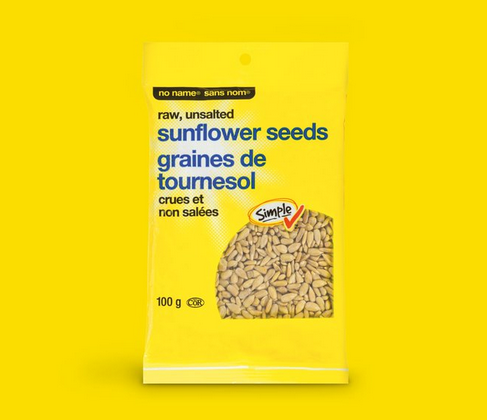 And what about No Name products?
And what about No Name products?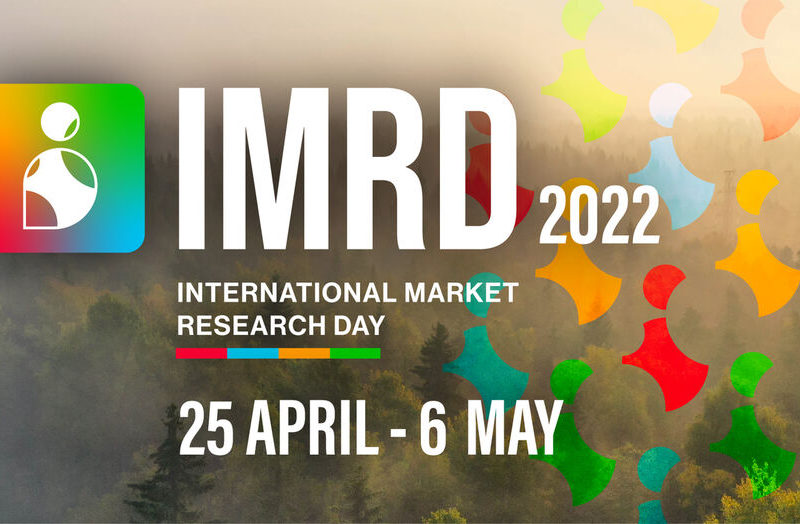
 Questionnaire design looks easy but when you get into the nitty, gritty details, you will come to a very different realization. In this 50 minute Esomar webinar, I shared a few of my favourite theories and tips to help those new to questionnaire design build more engaging questionnaires.
Questionnaire design looks easy but when you get into the nitty, gritty details, you will come to a very different realization. In this 50 minute Esomar webinar, I shared a few of my favourite theories and tips to help those new to questionnaire design build more engaging questionnaires.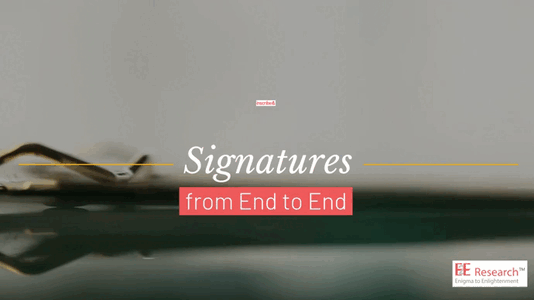
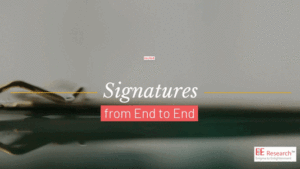 Most businesses have moved their standard contracts, including NDAs, MSAs, and SOWs, from paper and pencil signatures to digital signatures. Electronic or digital signatures are secure, legally binding, and traceable. And, they speed up business processes immensely.
Most businesses have moved their standard contracts, including NDAs, MSAs, and SOWs, from paper and pencil signatures to digital signatures. Electronic or digital signatures are secure, legally binding, and traceable. And, they speed up business processes immensely. Mid-Survey Consent: Researchers often need to gain consent during the survey experience. However, traditional signature tools require participants to exit the survey, check their email, complete a form, email it back to someone, and then return to the survey. Ultimately, this leads to unnecessary dropouts as some people will simply quit or get distracted never to return to the survey. By embedding Inscribe
Mid-Survey Consent: Researchers often need to gain consent during the survey experience. However, traditional signature tools require participants to exit the survey, check their email, complete a form, email it back to someone, and then return to the survey. Ultimately, this leads to unnecessary dropouts as some people will simply quit or get distracted never to return to the survey. By embedding Inscribe



